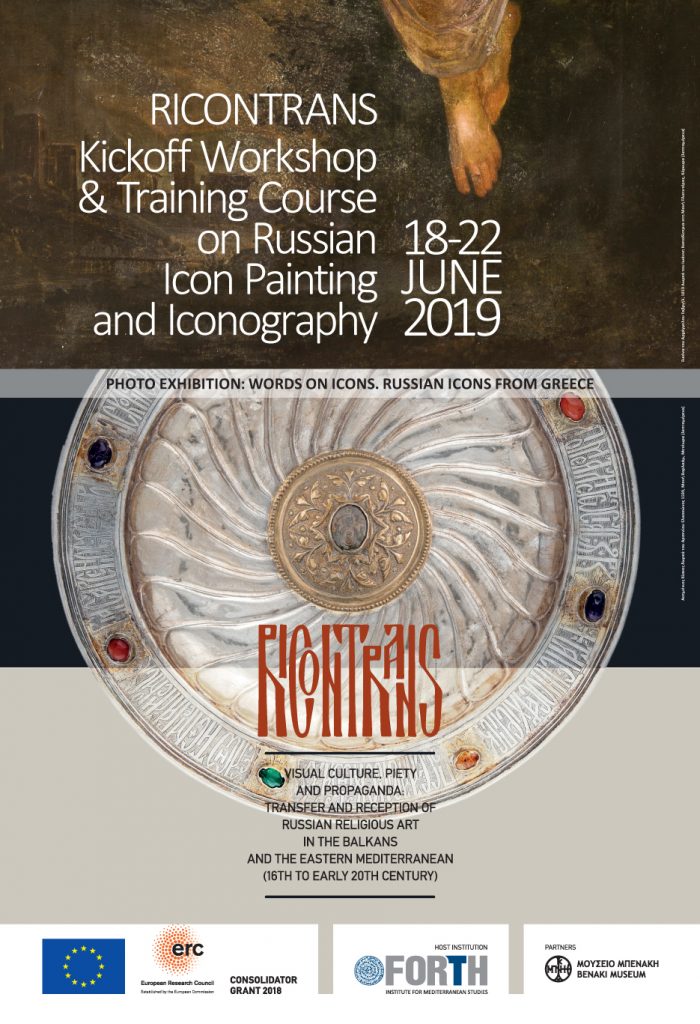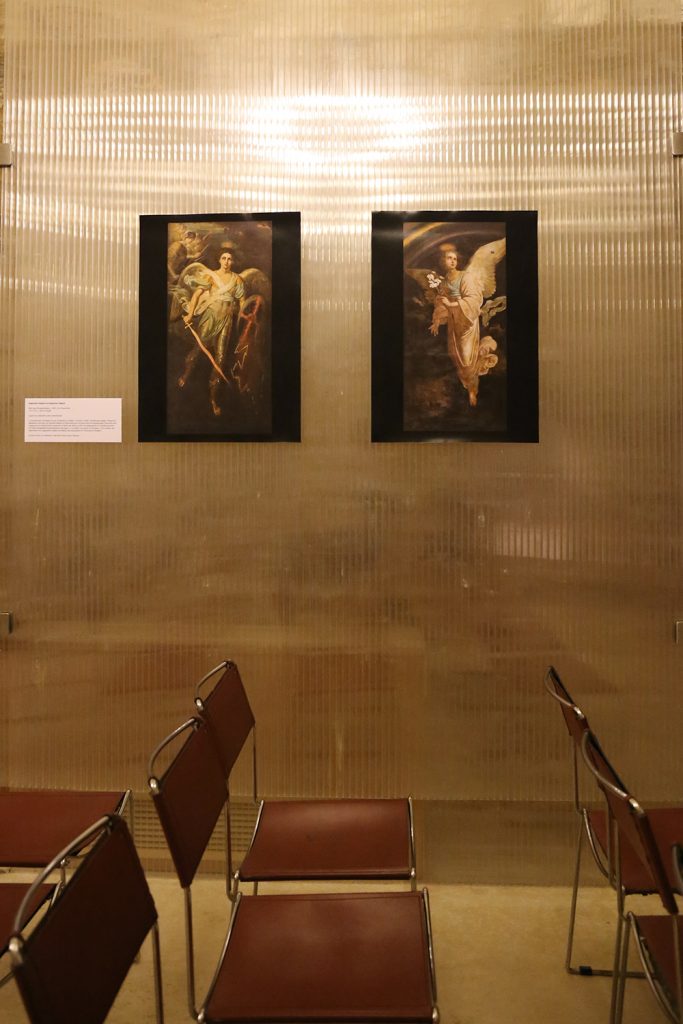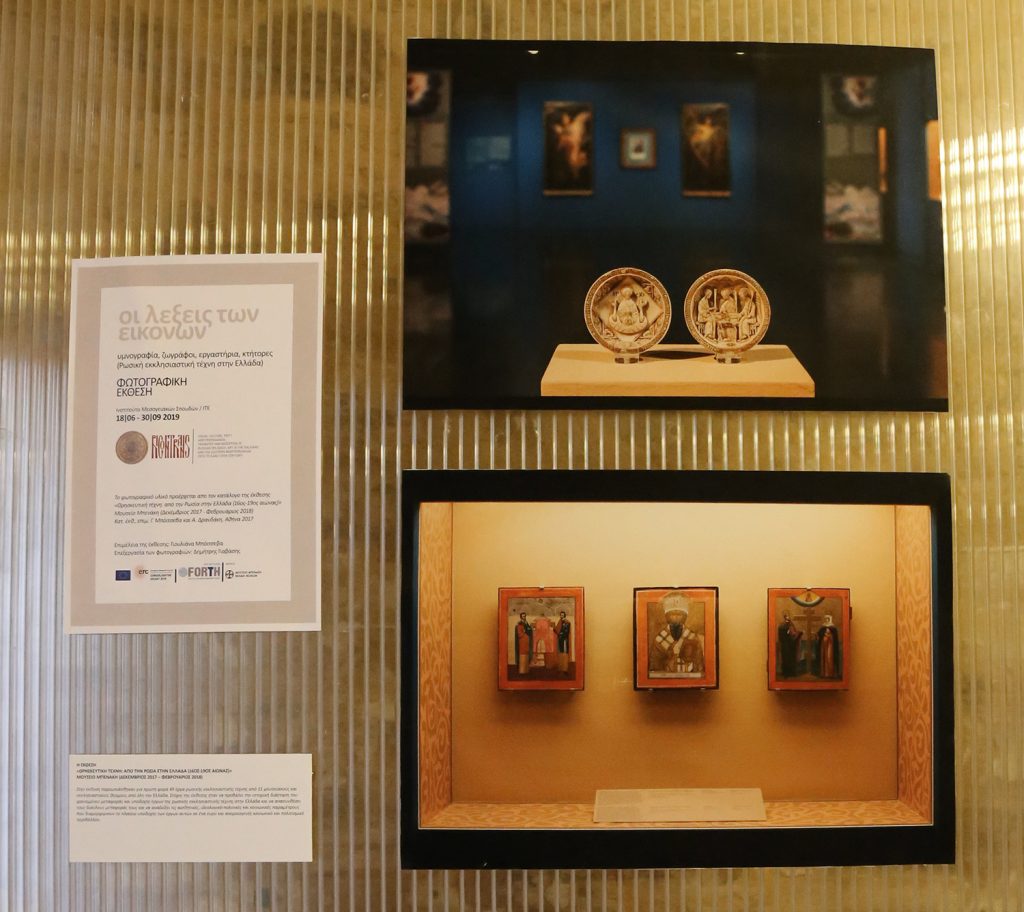Photo Exhibition: “Words on Icons. Russian Icons from Greece”,
Institute for Mediterranean Studies – FORTH, Rethymnon, Crete,
June 18 – September 30, 2019
Museums, churches and monasteries in the Balkans and Eastern Mediterranean countries, including Greece, host a collection of Russian religious artifacts, such as icons and ecclesiastical furnishings. These works of art have acquired a variety of religious, ideological, political, and artistic meanings and uses, and the way in which they were distributed in the region unveils the ties between Russia, the Balkans and the Eastern Mediterranean between the 16th to the early 20th century. The photo exhibition “Words on Icons. Russian icons from Greece” displays part of this artistic production, paying attention not only to masterpieces, but also to mass production artifacts.
The objects presented at this photo exhibition are carefully selected to show the different functions of the inscriptions on the icons – either iconographic, liturgical, or painter signatures etc – as well as the practice of “translation” of the inscriptions in Greek, as part of the process of their incorporation to the local communities.
The photo exhibition was based on the work of ERC grantee Yuliana Boycheva and a team of researchers currently working on the RICONTRANS Project. The team who investigate the transfer and reception of Russian religious artifacts in the Balkans and the Eastern Mediterranean, aim to analyse the political, religious and cultural dynamics of this transnational phenomenon of religious art transfer, researching the interactions of these objects and their impact on the receiving societies but also their appropriation and incorporation into local visual culture.
The photo exhibition presented the galleries and several artifacts included in the exhibition “Religious art from Russia to Greece”, which took place at the Benaki Museum in Athens (December 2017 – February 2018) and was part of a previous collaboration between IMS/FORTH in Rethymno and the Benaki Museum in Athens.
The public, both general and academic, was able to visit the exhibition by appointment, Monday through Friday, between 9:00 and 16:00. The access was free of charge.



